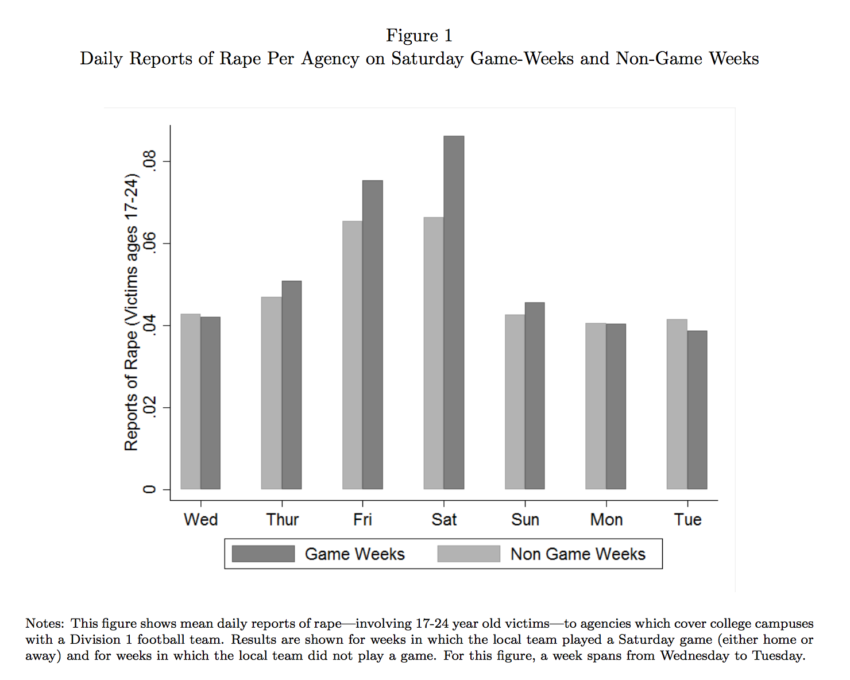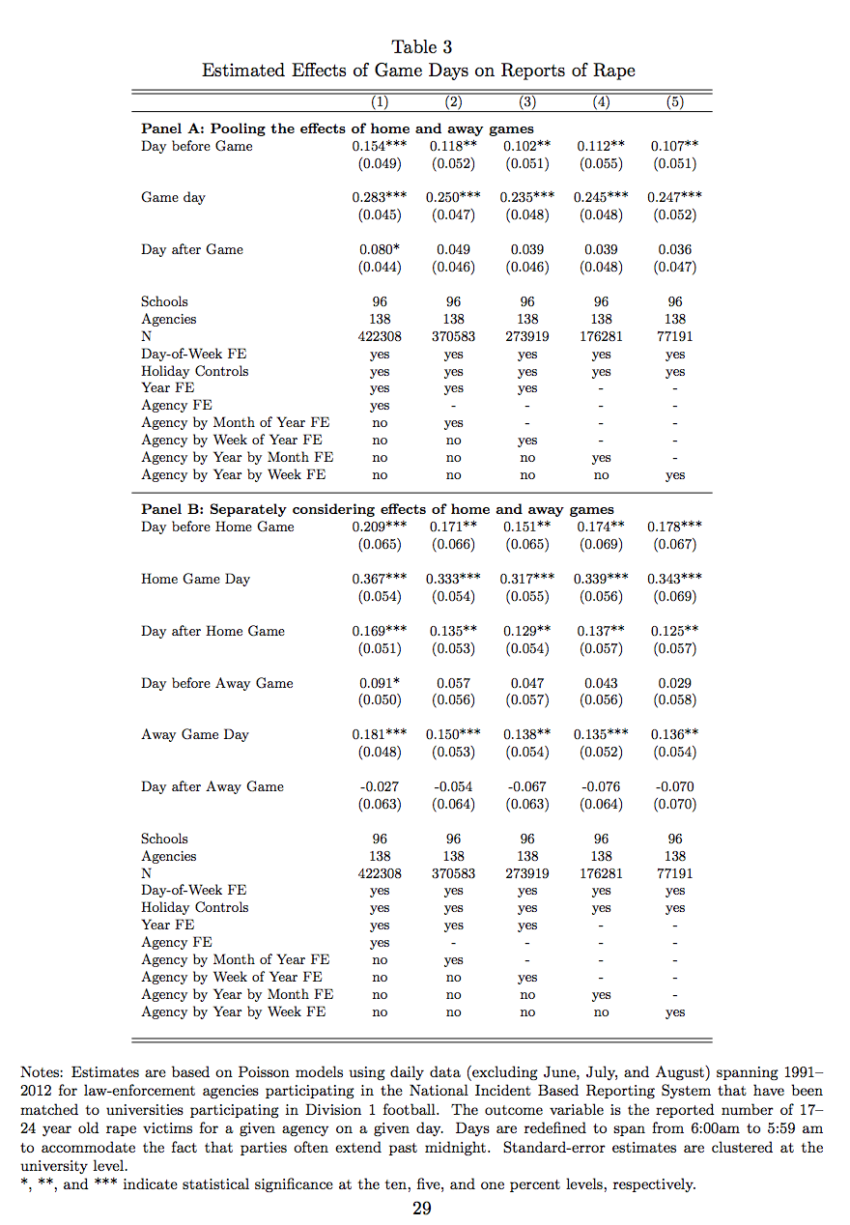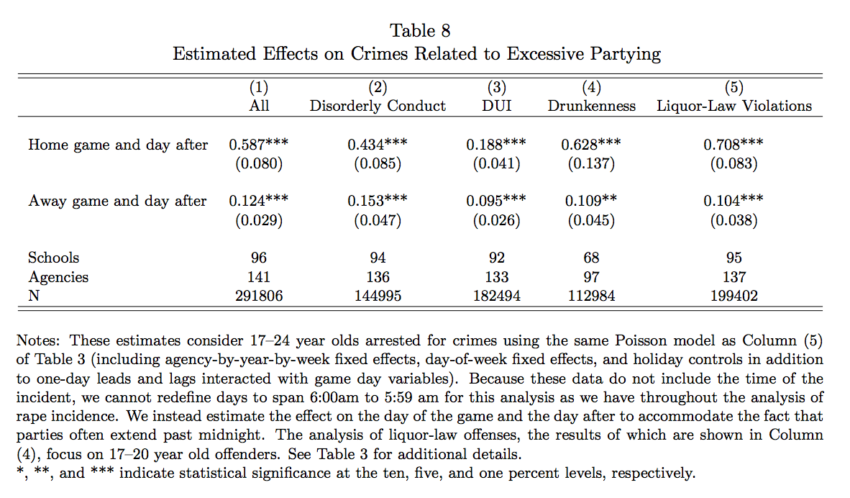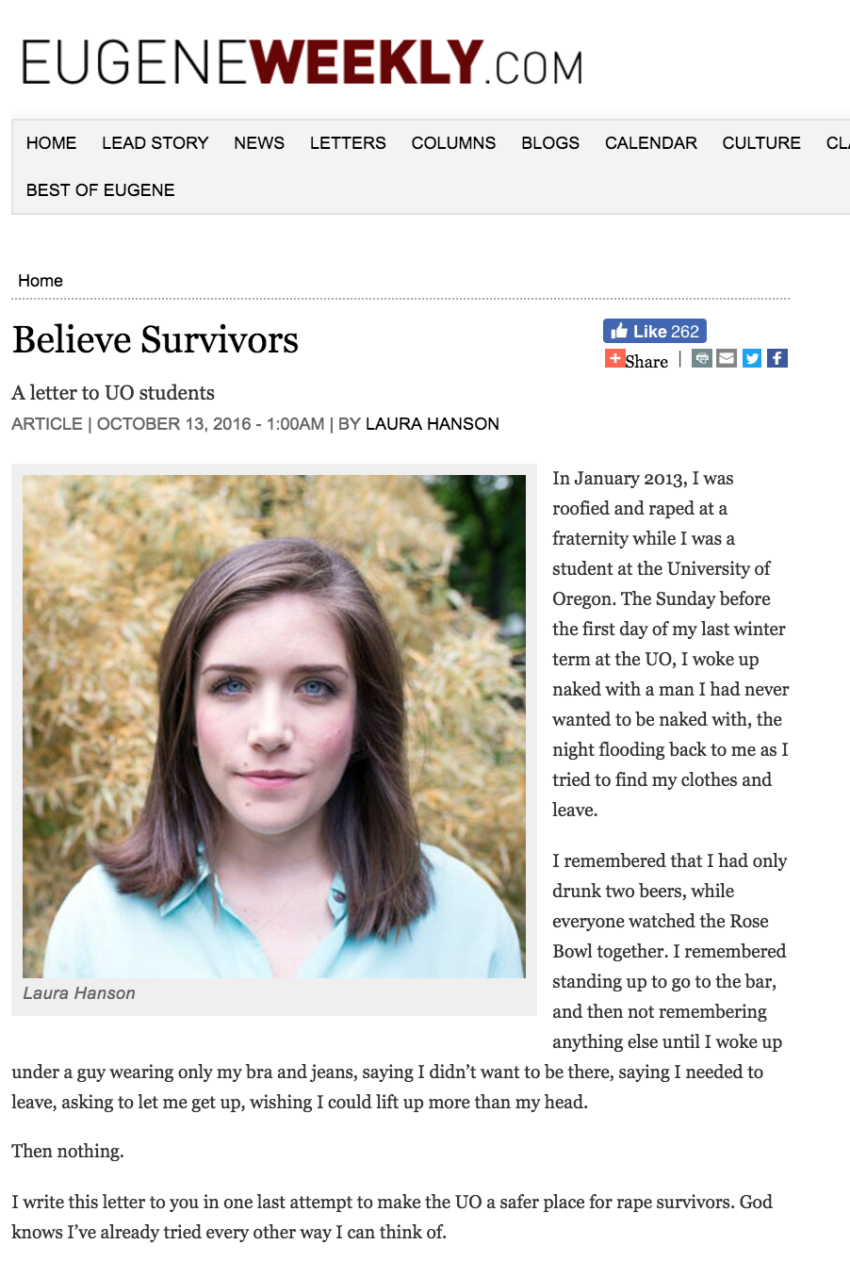The empirical support for the link between big-time college football, drinking, and rape is documented by Lindo, Siminski, and Swensen (2016), College Party Culture and Sexual Assault:
This paper considers the degree to which events that intensify partying increase sexual assault. Estimates are based on panel data from campus and local law-enforcement agencies and an identification strategy that exploits plausibly random variation in the timing of Division 1 football games. The estimates indicate that these events increase daily reports of rape with 17-24 year old victims by 28 percent. The effects are driven largely by 17-24 year old offenders and by offenders unknown to the victim, but we also find significant effects on incidents involving offenders of other ages and on incidents involving offenders known to the victim.
… A back of the envelope calculation based on our estimates implies that the effects of Division 1A football games explain 5 percent of fall semester (September through December) reports of rape involving 17–24 year old victims to law enforcement agencies serving students attending these schools. Moreover, based on an estimated 12 percent of student victims reporting to the police (Kilpatrick, 2007) and 6 percent of police reports involving false allegations (Lisak et al. 2010), our estimates indicate that the activities surrounding Division 1A football games cause as many as 724 additional rapes of college-aged victims per year across 128 universities. That said, if one is inclined to believe that spatial displacement is the sole reason why away games have smaller effects than home games, the estimate is instead 238.



Today the Eugene Weekly has an op-ed from former UO undergrad Laura Hanson, regarding her alleged rape at a frat party, after the Ducks 2013 Rose Bowl game:

Read the rest here.
Using variations in the days on which diet cola is on sale in Safeway stores, along with reported sales and weights of customers, I have found that days of sales of diet cola at Safeway stores are highly correlated with average weight of customers. What should I conclude?
That you should have read the paper before commenting on it.
If I wanted to prevent overweight people from going to Safeway, then I would conclude that we shouldn’t have sales on diet soda.
Witty, but an inaccurate presumption.
My original comment was to the paper first posted, not to the subsequent, heartbreaking survivors story, but for some reason unknown to me, it appeared below the survivor story. Nothing in the comment was intended to refer to the survivors story.
You should have read the post before commenting on it. Both the research paper and the survivor’s story were in the original post, hence the headline.